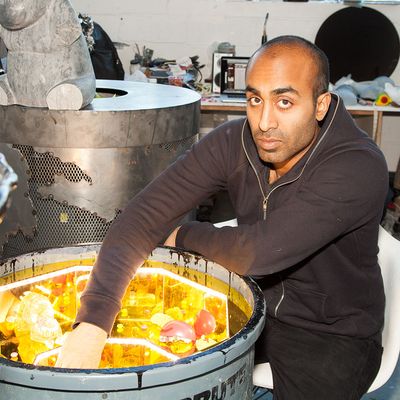
Born in Baltimore in 1984, Ajay Kurian arrived in New York in 2002. Shortly after studying painting and sculpture as an undergraduate at Columbia University, Kurian became known for his curatorial projects through GreshamÔÇÖs Ghost. By 2011, he returned to his artwork and began exhibiting, his vocabulary wider and no longer bound by the rules of traditional painting. His solo debut involved a mechanical-wave driver that translated sound vibrations into visual sand patterns as if by some otherworldly force.
I met with Kurian just before he shipped his sculptures to Art Basel Miami Beach to exhibit in the Nova section through his New York gallery 47 Canal. Three of the four sculptures in progress were at his studio. ÔÇ£The whole project is very loosely inspired by the end of GoetheÔÇÖs Faust, where heÔÇÖs about to have a moment of self-understanding and heÔÇÖs being haunted by these three specters or ghosts. Three of them are outside his door, and one is actually able to slip in. They are Want, Need, Guilt, and Care. Care was the only one able to slip in. So what IÔÇÖm showing are three of the four of those, and leaving Guilt out because itÔÇÖs an art fair.ÔÇØ
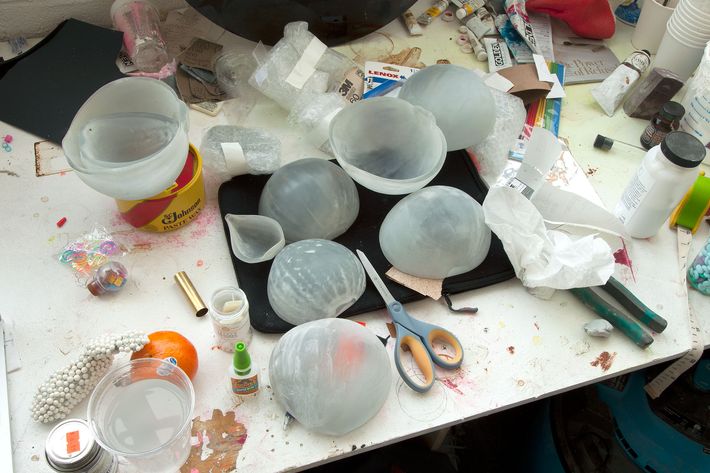
Sitting on top of Without Polish (Care) (2014) was a traditionally carved marble frog, which, in its final form, will have limbs holding a 3-D-printed onion. ÔÇ£I scanned a full onion and got every single layer printed. Each layer will be sanded to a polish and glazed a different color. There is a mournful aspect to some of the pieces.
The onion is a kind of memento mori you might see in a medieval still-life painting ÔÇö like a bubble about to pop or a glass form barely visible.ÔÇØ
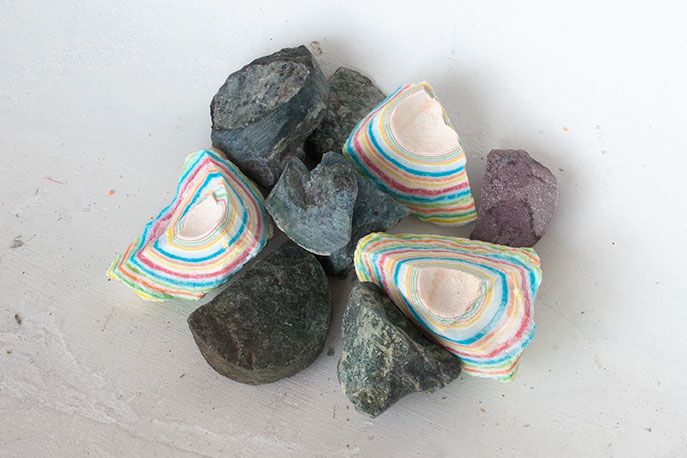
Layers within layers are common themes in KurianÔÇÖs work, like with a candy Jawbreaker. He gathered a few of the broken candies mixed with a selection of his collected rocks. ÔÇ£There is as much of a sedimentation to candy as there is to words, as to the world itself, as to emotions, and all sorts of things. ItÔÇÖs thinking about false versus real geologies as well as this arbitrary division between nature and culture. ThatÔÇÖs not to say that these things are all equally meaningful, just equally real.ÔÇØ
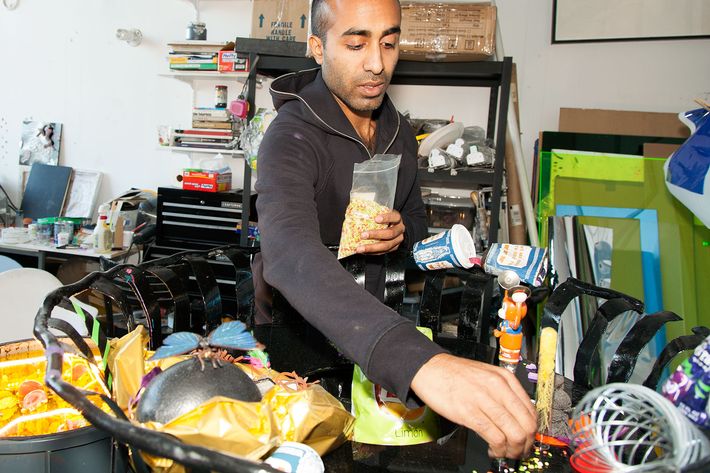
All three of the cruciblelike sculptures in KurianÔÇÖs studio that day were takes on trashcans. Above, Kurian worked out objects that will activate the top of Chicken Bone, Chicken Bone (Need), 2014. The sculptureÔÇÖs bottom half distinctly references a New York trashcan ÔÇö the kind bumped so many times on the lip of a garbage truck that it had been transformed into an hourglass shape.
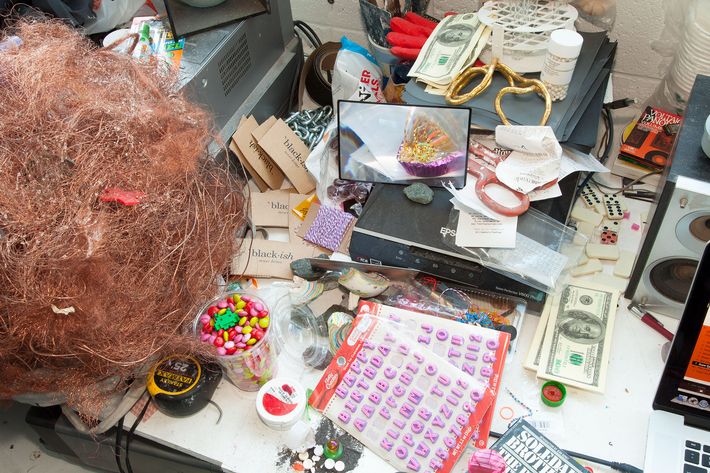
Lying around the studio were numerous collected objects. I generally have some sort of custom M&Ms. These say frats, liberals, and the rest are dollar signs. Its a riff on fraternity, equality, and liberty. For the sake of intense color, they appeal to me, and theyre jokey enough that I know theyll make sense with something. Ive used a lot of candy in my work. Those birthday letters, candy Legos. And other things, those napkins with 100-dollar bills printed on them, macaroni, dominos, Mr. Potato Head stuff, snail shells, reindeer moss  In a previous piece, I had dice that were erasers, and I really like that idea. Almost erasing chance. I like childrens toys  theyre informative of what our preoccupations are. Theres a lot of copper wire because I was making these tumbleweeds. I was thinking about connectivity.
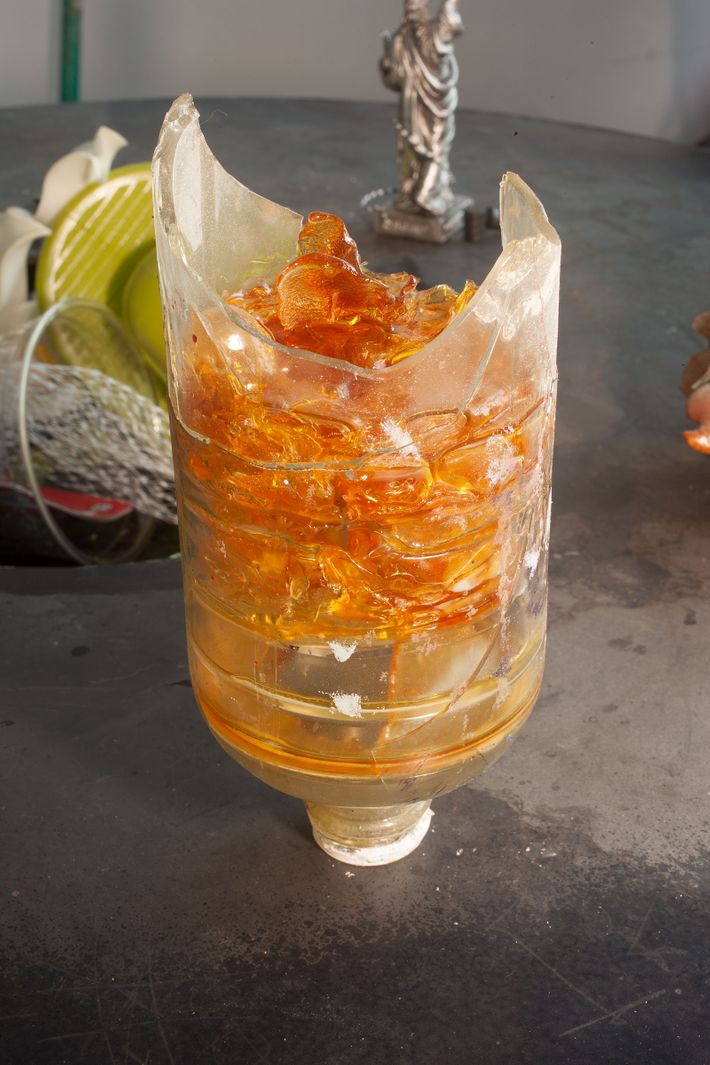
Among the collected objects, Kurian had a few beloved ones. The first was a jar once filled with painting fluid ÔÇö lines of dried medium marked the glass interior of each time he used it. One day it fell. ÔÇ£I felt shattered. But then the medium emptied out and it became an object. It was done.ÔÇØ
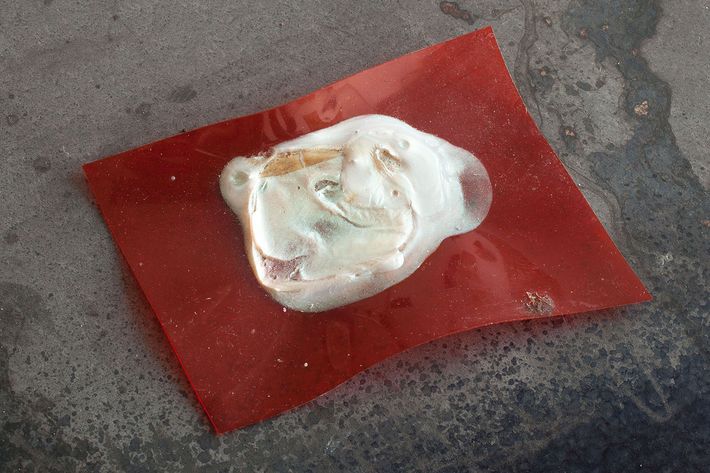
Another cherished object was a piece of red plastic with iridescent paint that had formed by a rose petal drying on top of it. Kurian tried to repeat the effect for a Rorschach-type piece but wasnÔÇÖt able to imitate it. ÔÇ£There were all these particularities to the fact that the petal was an organic material and permeable. I would never use this object. If I put it in a work, IÔÇÖd feel like I was losing something too big. ItÔÇÖs a lesson in regarding resistances.ÔÇØ
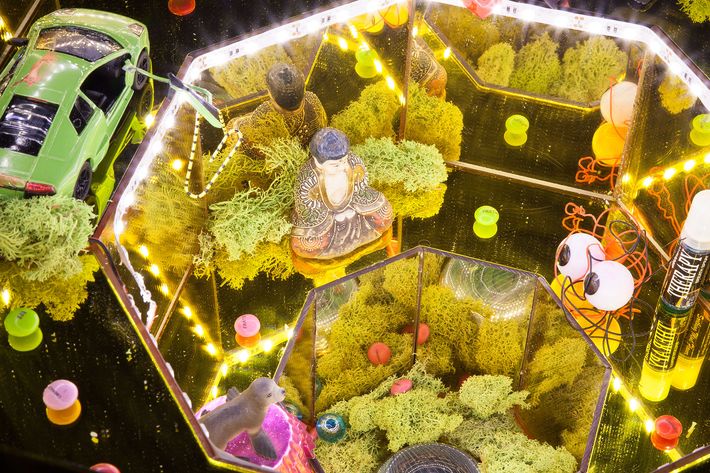
The absence of Guilt left a vacancy for KurianÔÇÖs fourth sculpture, How It Is (2014), a chromed, life-size chameleon hanging from a chain and created from a purchased 3-D model. The sculpture (which was getting powder-coated the day I visited) was inspired by the philosophical question: What happens when you put a chameleon on a mirror? ÔÇ£My take was that it goes chrome,ÔÇØ said Kurian. ÔÇ£That feels specific to our time. In society, you are asked to be as fluid and reflective as possible. You should be as changeable and reflect your surroundings as best as you possibly can and become one with that. If there is one mascot for this sort of project, it would be a battle between the frog, the onion, and this chameleon.ÔÇØ
* * *
KurianÔÇÖs work is represented by 47 Canal in New York and will be exhibited through the gallery at Nova section of Art Basel Miami Beach.
Sarah Trigg is the author and photographer of STUDIO LIFE: Rituals, Collections, Tools and Observations on the Artistic Process.


